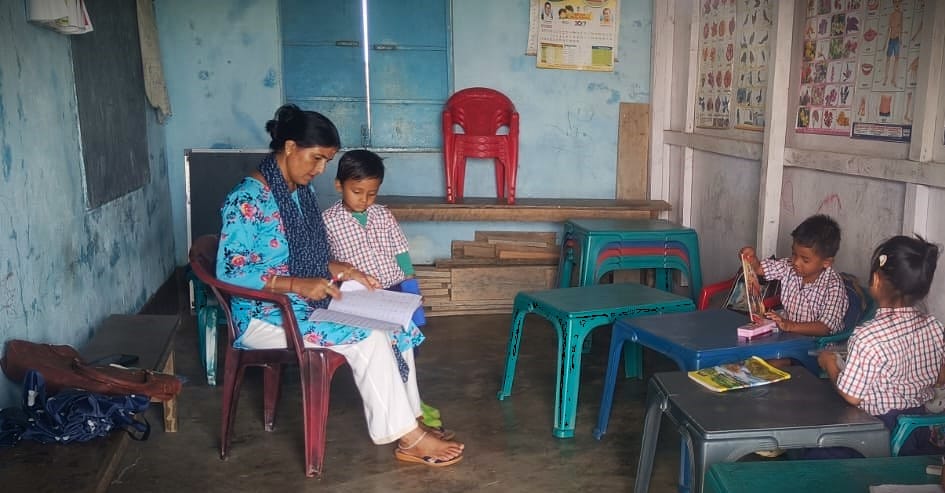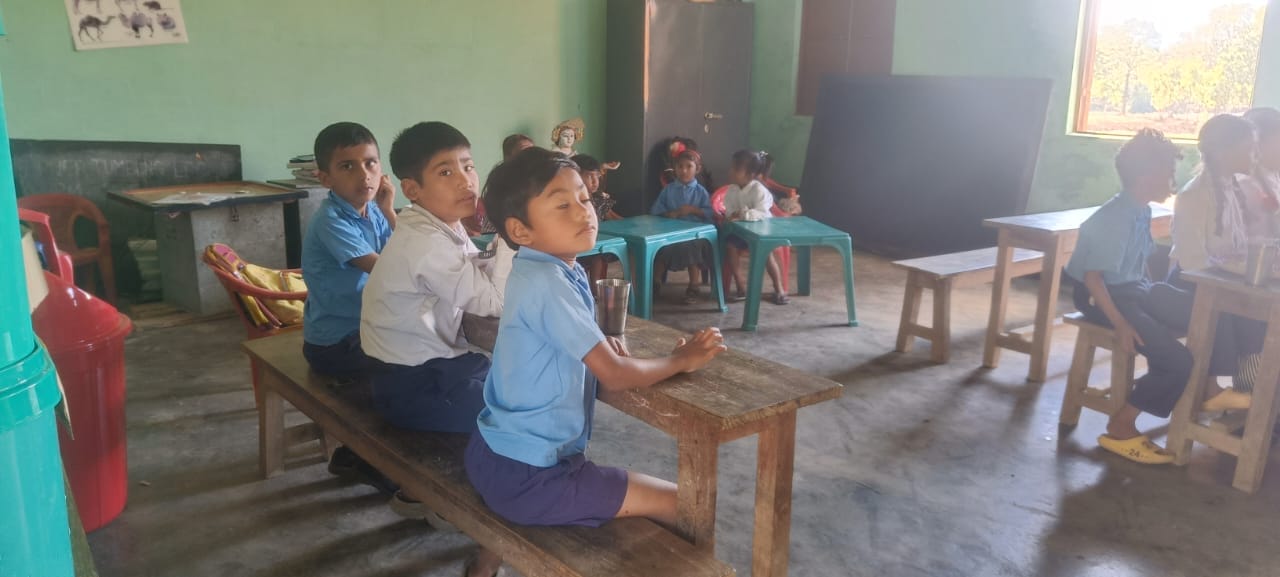Building Blocks of Health: How Infrastructure Shapes Child Well-Being at Anganwadi Centres

Parvati Sharma, an Anganwadi worker (AWW) at the Thapatol Anganwadi Centre in New Tumbung village, Dima Hasao, faces many challenges in her day-to-day work. She cares for six children from the locality, but the centre she works at lacks basic infrastructure. Currently, the Anganwadi centre operates in a cramped space shared with the Thapatol Lower Primary School. There is no dedicated building for the Anganwadi, forcing them to use the school’s toilets, which were designed for older children, not toddlers.
The lack of a kitchen adds to Parvati’s troubles. Without a proper place to prepare meals, the mid-day meals provided to the children are often handed out directly, which isn’t ideal. This not only affects hygiene but also makes it difficult to provide warm, freshly prepared food, which is crucial for young children’s nutrition.

Unfortunately, this isn’t an isolated issue. In Umrongso, only one out of 47 Anganwadi centres has a permanent building. The rest operate in temporary spaces, facing similar struggles. This poor infrastructure poses serious risks to children’s health and development, especially during the critical early years when their brains are rapidly growing.
Good health, physical activity, and a stimulating learning environment are essential for children’s growth, but the lack of proper facilities makes this almost impossible. Without suitable classrooms, play areas, or learning tools, children miss out on the foundational experiences they need.
The absence of infrastructure creates a domino effect of problems. Without a dedicated space, children are deprived of a safe and engaging environment to learn and grow. The lack of kitchens disrupts the proper distribution of nutritious mid-day meals, and delays in receiving meal supplies further add to the issue.
What Needs to Be Done
The solution lies in prioritizing infrastructure development for Anganwadi centres. The community, along with local authorities, needs to come together to advocate for better facilities. With permanent buildings, proper kitchens, clean toilets, and learning tools, these centres can provide children with the care and environment they need to thrive.
Investing in these centres means investing in the future. By improving the infrastructure of Anganwadi centres in places like Umrongso, we can ensure that every child has the opportunity to grow, learn, and reach their full potential. It’s time for everyone to join hands and make this a reality.
